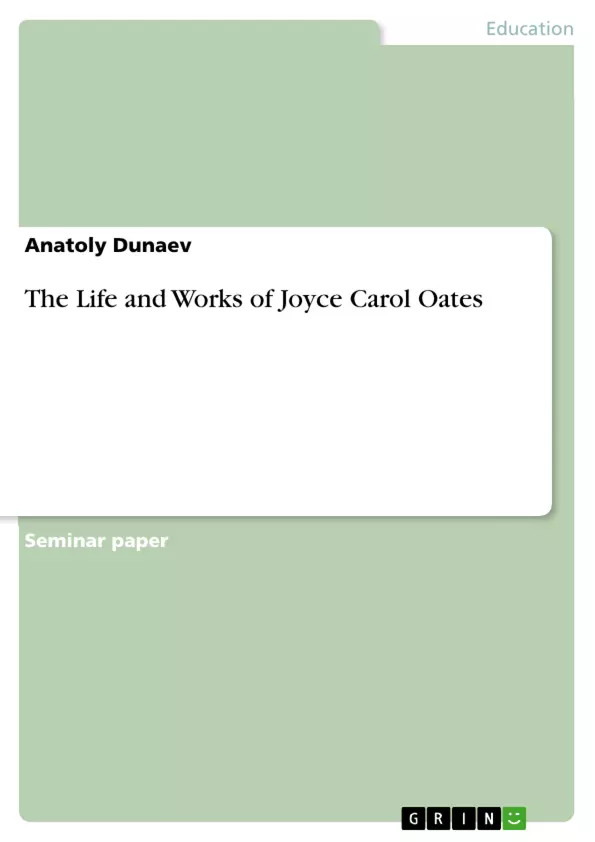According to Greg Johnson, the bibliographer of Joyce Carol Oates, she is “the most talented, most inventive, and most exciting of American fiction writers” (Johnson, Invisible Writer XV). Novelist, short story writer, poet, playwright, critic, teacher, editor, and publisher, Joyce Carol Oates is an artist of amazing versatility, productivity, and range. She is the author of more than 1,000 short stories, over 50 novels, dozens of books of essays, plays, and poetry (including a dozen novels published under two literary pseudonyms: Rosamond Smith and Lauren Kelly). Her works are translated into more than 30 languages.
Joyce Carol Oates is often characterized as a workaholic. But in “A Brief Biography” on her official web-site Greg Johnson quotes her reply to this statement in one of the interviews to the New York Times, where she said “I am not conscious of working especially hard, or of ‘working’ at all. Writing and teaching have always been, for me, so richly rewarding that I don’t think of them as work in the usual sense of the word”.
Oates’s productiveness has become not only one of her best-known attributes but also a great obstacle for new readers who are often confused by such an amount of her works and do not know what title they should start with. So in this paper besides the description of Joyce Carol Oates’s life and literary legacy I single out her most notable and important works that ought to be read in the first place.
Inhaltsverzeichnis (Table of Contents)
- Introduction
- Joyce Carol Oates
- Childhood and Adolescence
- Beginning of the Literary Career
- Teaching and Writing
- 21st century
- Conclusion
Zielsetzung und Themenschwerpunkte (Objectives and Key Themes)
This paper examines the life and works of Joyce Carol Oates, a prolific and influential American writer. It aims to provide a comprehensive overview of her literary career, highlighting her key works and themes.
- Oates's prolific writing career and her diverse literary output, encompassing novels, short stories, poetry, and plays.
- The recurring theme of violence in Oates's works and its exploration of the darker aspects of human nature.
- The impact of Oates's childhood and upbringing on her writing, particularly her experiences with the Great Depression.
- Oates's literary influences, including Edgar Allan Poe and other writers who shaped her style and perspective.
- Oates's role as a social critic and her engagement with contemporary issues in her writing.
Zusammenfassung der Kapitel (Chapter Summaries)
The first chapter provides an introduction to the life and works of Joyce Carol Oates, highlighting her prolific writing career and her diverse literary output. The second chapter delves into Oates's early life, focusing on her childhood and adolescence and the influences that shaped her early writing.
Schlüsselwörter (Keywords)
Joyce Carol Oates, American literature, Gothic tradition, violence, social criticism, short stories, novels, poetry, plays, childhood, literary influences, Edgar Allan Poe.
- Quote paper
- Anatoly Dunaev (Author), 2010, The Life and Works of Joyce Carol Oates, Munich, GRIN Verlag, https://www.grin.com/document/179848



